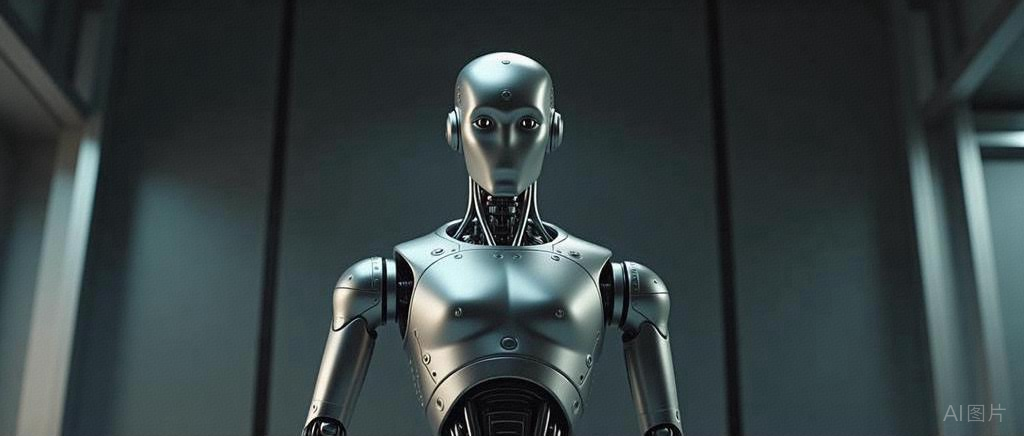
A Historic Moment: When Robots Took to the Marathon Track
On the morning of April 19, 2025, at 7:30 AM, on the half marathon track in Beijing Yizhuang, a group of special “contestants” stood alongside 12,000 human runners. With the sound of the starting gun, the world’s first human-robot half marathon officially began. This event was not only a celebration of technology but also a profound exploration of the future of humanity—what will the world be like when robots learn to run?
Among the 20 participating teams, the 1.8-meter tall “Tiangong Ultra” crossed the finish line first with a time of 2 hours, 40 minutes, and 42 seconds, averaging a pace of 7-8 kilometers per hour, with a top speed exceeding 12 kilometers per hour. This achievement even surpassed many amateur human runners, and its story reflects the resurgence of China’s robotics industry.
The Victory of “Tiangong Ultra”: Breakthroughs in Hardcore Technology and Industrial Ambitions
1. From “Walking” to “Running”: A Technical Challenge
The development team of Tiangong Ultra comes from the Beijing Humanoid Robot Innovation Center, formed by several industry leaders including UBTECH. The key to its success lies in overcoming three major technical bottlenecks:
Stability and Lightweight Design: Weighing 55 kilograms, it solved the heat dissipation problem during long-distance running through a high-density integrated joint design;
Intelligent Algorithm Upgrade: Equipped with the “Wisdom and Creation” general embodied intelligence platform, it achieves “one brain controlling multiple machines,” allowing the robot to plan paths and dynamically avoid obstacles in real-time;
Revolution in Energy Management: Utilizing fast-swappable battery technology, its endurance improved by 40%, completing the race with only three battery changes.
2. From Laboratory to Open Scenarios: A Real-World Stress Test
The track design was full of challenges: the 21.0975 kilometers included a 9° steep slope, railway tracks, and uneven surfaces, requiring the robot to perform approximately 250,000 joint movements. Tiangong Ultra fell multiple times during the race but autonomously got back up, demonstrating what engineers called “AI evolution through learning from failure.” As Liang Jiang, Deputy Director of the Beijing Economic Development Zone Management Committee, stated: “Participation is victory, and finishing is heroism.”
The Scene of the Race: Heartwarming Moments Intertwined with Technology and Humanity
1. The Underdog’s Triumph: The Inspirational Story of the N2 Robot
Standing only 1.2 meters tall, the N2 “Little Rascal” finished second with a time of 3 hours and 15 minutes. Priced at 39,900 yuan, this robot utilized bionic drive technology to automatically reduce speed and dissipate heat when the battery overheated, overtaking competitors in the last 3 kilometers. After crossing the finish line, it even turned around to greet its teammates, performing a “high-five” interaction that charmed the entire audience.
2. The “Cutest Contestant” Goes Viral: The Social Celebration of the 0306 Little Giant
Standing 75 centimeters tall, the “0306 Little Giant” was developed by a team of university students and had just completed its first hundred days before the race. It could not only perform heart gestures and spin around but also posed in a “wronged” position after falling. At the supply station, it used its mechanical arm to receive a battery and said “thank you,” with related memes quickly trending on Weibo.
3. Moments of Empathy Between Humans and Machines
A father watching the race with his child remarked: “Seeing the robot fall and get back up, I suddenly understood that technology does not replace humanity, but helps us better understand the meaning of resilience.” This emotional resonance is the true spirit that transcends competition.
Industry Insights: The Technological Race Behind a Marathon
1. From “Laboratory Toys” to “Industrial Powerhouses”
Xiong Youjun, the team leader of Tiangong, candidly stated: “This competition is a rehearsal for robots entering factories and homes.” Beijing Yizhuang has planned for the application of 10,000 robots, and in the future, humanoid robots will penetrate nine major scenarios including logistics, rescue, and elderly care.
2. China’s “Overtaking on a Bend” in the Robotics Industry
Unlike Boston Dynamics’ “show-off” approach, Chinese teams focus more on cost-effectiveness and scenario adaptability. For example, the third-place “Xingzhe No. 2” uses tendon bionic drive, with a 6-hour endurance and a range of 100 kilometers, costing only one-third of similar international products. Xiong Youjun predicts: “In the era of embodied intelligence, the technology iteration cycle will shrink from 18 months to 100 days.”
3. Bubble or Future? A Cool Reflection on the Industry
Despite skepticism in the venture capital community regarding the commercialization of humanoid robots, the data from this event provides answers: within three months, the average endurance of participating robots improved by 40%, and the fall rate decreased by 60%. As an analyst from Sequoia Capital stated: “Bubbles will eventually burst, but real demand will always exist.”
The Future is Here: The Stars and Seas of Human-Machine Symbiosis
The finish line of this half marathon is precisely the starting point of the industrial marathon. Beijing Yizhuang plans to launch a “Human-Machine Interaction Themed Race” within the year, while the Tiangong team is already working on developing upper body manipulation functions, aiming to enable robots to “serve coffee and open refrigerators like humans.”
Looking back at history, humanity has measured the earth with its legs; looking forward to the future, robots will reconstruct civilization with algorithms. As inscribed on the event medal: “21 kilometers is just the beginning; the future belongs to the courage of symbiosis.” Perhaps one day, when robots gracefully navigate through streets, factories, and Martian bases, people will remember that spring day in 2025 when they ran—marking the beginning of silicon-based life paying tribute to carbon-based civilization and a declaration of reconciliation between humanity and technology.